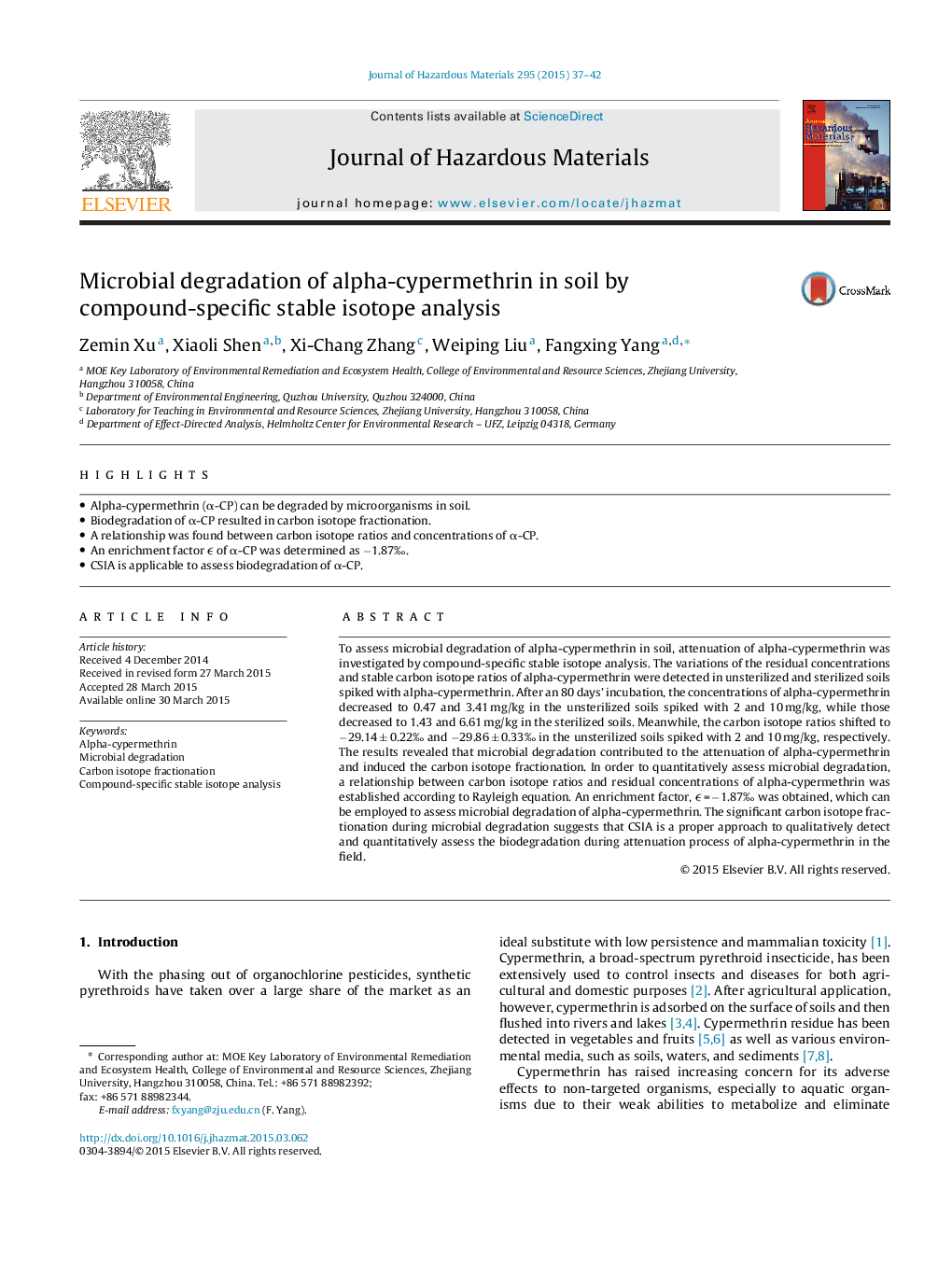| Article ID | Journal | Published Year | Pages | File Type |
|---|---|---|---|---|
| 6971056 | Journal of Hazardous Materials | 2015 | 6 Pages |
Abstract
To assess microbial degradation of alpha-cypermethrin in soil, attenuation of alpha-cypermethrin was investigated by compound-specific stable isotope analysis. The variations of the residual concentrations and stable carbon isotope ratios of alpha-cypermethrin were detected in unsterilized and sterilized soils spiked with alpha-cypermethrin. After an 80 days' incubation, the concentrations of alpha-cypermethrin decreased to 0.47 and 3.41 mg/kg in the unsterilized soils spiked with 2 and 10 mg/kg, while those decreased to 1.43 and 6.61 mg/kg in the sterilized soils. Meanwhile, the carbon isotope ratios shifted to â29.14 ± 0.22â° and â29.86 ± 0.33â° in the unsterilized soils spiked with 2 and 10 mg/kg, respectively. The results revealed that microbial degradation contributed to the attenuation of alpha-cypermethrin and induced the carbon isotope fractionation. In order to quantitatively assess microbial degradation, a relationship between carbon isotope ratios and residual concentrations of alpha-cypermethrin was established according to Rayleigh equation. An enrichment factor, ϵ = â1.87â° was obtained, which can be employed to assess microbial degradation of alpha-cypermethrin. The significant carbon isotope fractionation during microbial degradation suggests that CSIA is a proper approach to qualitatively detect and quantitatively assess the biodegradation during attenuation process of alpha-cypermethrin in the field.
Keywords
Related Topics
Physical Sciences and Engineering
Chemical Engineering
Chemical Health and Safety
Authors
Zemin Xu, Xiaoli Shen, Xi-Chang Zhang, Weiping Liu, Fangxing Yang,
